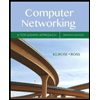
Concept explainers
A certain link layer interfaces uses CRC to detect errors. Answer the following questions.
a. For each 8-bit data frame, the layer users a generator polynomial G(x0 = x^4 + x^2+ 1 to add redundant bits. What is the sequence of bits actually sent when the 8-bit data frame is "10011101"?
b. Assume a sender has a 6-bit data fame "101110" to transmit to a receiver. The sender generates the data frame "101110011" and sends it to a receiver. The sender uses the generator "1001" to find an R. Assume there will be no errors in the CRC bits. Can the receiver detect all errors in the received frame using the given generator and the CRC bits? Justify your answer.
Please show step by step explanations and solution for a good understanding. Thank you very much.
Trending nowThis is a popular solution!
Step by stepSolved in 3 steps with 1 images

- Please answer ASAParrow_forwardIn a Von Neumann architecture, groups of bits have no intrinsic meanings by themselves. What a bit pattern represents depends entirely on how it is used. The following table shows bit patterns expressed in hexadecimal notation i. 0x000940C2 ii. 0x8C90FFFC Qa)What decimal number does each bit pattern represent if, i.It is a two’s-complement integer? ii.It is an unsigned integer? b) If each bit pattern represents an MIPS instruction, what instruction will be executed? c) What decimal number does each bit pattern represent if it is a floating-point number in IEEE 754 standard?arrow_forward2. For each of the following, write the ONE correct answer. a) TCP/IP layers are Internet (I), Transport (T), Application (A), Physical (P), Network Interface (N). Which layer deals with modulation in WiFi networks? The layer whose header contains the source MAC address is Answer= Answer= b) The leftmost and rightmost bits in a byte are MSbit and LSbit respectively. For the 2 bytes 10000000 00000001, assume that the first byte is MSbyte and the second byte is LSByte. Assuming that bits are transmitted from left to right, write the transmission order that is bit big endian and byte little endian: Answer= c) Let TP=unshielded twisted pair, CC=coaxial cable, F=fiber, L=lasercommunication. Which of these media Uses a shield for limiting interference Achieves the highest bandwidth across long distances Answer= Answer= d) Of FDMA, CDMA, TDMA and SM (statistical multiplexing), which method is multiplexing primarily based on in LTE networks? Answer= e) Which particular form of FDM is used over…arrow_forward
- Q13: Consider a binary sequence with a long sequence of 1s followed by a single "0" and then a long sequence of "Is" as shown below. Draw waveforms for this sequence, using the following formats: (a)Unipolar RZ signaling. (b) Bipolar NRZ signaling. Binary sequence: 11111011111arrow_forwardThe figure below illustrates an asynchronous transmission in the form of short blocks. Each data bit is of 9.06 ms duration, start bit duration is 0.04ms more than a data bit duration, and each stop bit duration is double the duration of a start bit . Determine the bit rate and baud rate of the transmission. Data Bits Stop Bits Start Bit 1 101 0 10 010 1 Line is quiet! Direction of Data Data: 0100 1010arrow_forwardPlease solve this question in multimedia networks quicklyarrow_forward
- Suppose a file of 10,000 bytes is to be sent over a line at 2400 bps. A. Calculate the overhead in bits and time in using asynchronous communication. Assume one start bit and a stop element of length one bit, and 8 bits to send the byte itself for each character. The 8-bit character consists of all data bits, with no parity bit. B. Calculate the overhead in bits and time using synchronous communication. Assume that the data are sent in frames. Each frame consists of 1000 characters = 8000 bits and an overhead of 48 control bits per frame. C. What would the answers to parts (a) and (b) be for a file of 100,000 characters?arrow_forwardHow may the interval between bytes be different in asynchronous transmissions?arrow_forward
 Computer Networking: A Top-Down Approach (7th Edi...Computer EngineeringISBN:9780133594140Author:James Kurose, Keith RossPublisher:PEARSON
Computer Networking: A Top-Down Approach (7th Edi...Computer EngineeringISBN:9780133594140Author:James Kurose, Keith RossPublisher:PEARSON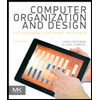 Computer Organization and Design MIPS Edition, Fi...Computer EngineeringISBN:9780124077263Author:David A. Patterson, John L. HennessyPublisher:Elsevier Science
Computer Organization and Design MIPS Edition, Fi...Computer EngineeringISBN:9780124077263Author:David A. Patterson, John L. HennessyPublisher:Elsevier Science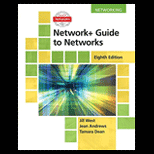 Network+ Guide to Networks (MindTap Course List)Computer EngineeringISBN:9781337569330Author:Jill West, Tamara Dean, Jean AndrewsPublisher:Cengage Learning
Network+ Guide to Networks (MindTap Course List)Computer EngineeringISBN:9781337569330Author:Jill West, Tamara Dean, Jean AndrewsPublisher:Cengage Learning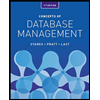 Concepts of Database ManagementComputer EngineeringISBN:9781337093422Author:Joy L. Starks, Philip J. Pratt, Mary Z. LastPublisher:Cengage Learning
Concepts of Database ManagementComputer EngineeringISBN:9781337093422Author:Joy L. Starks, Philip J. Pratt, Mary Z. LastPublisher:Cengage Learning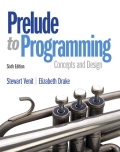 Prelude to ProgrammingComputer EngineeringISBN:9780133750423Author:VENIT, StewartPublisher:Pearson Education
Prelude to ProgrammingComputer EngineeringISBN:9780133750423Author:VENIT, StewartPublisher:Pearson Education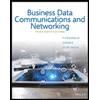 Sc Business Data Communications and Networking, T...Computer EngineeringISBN:9781119368830Author:FITZGERALDPublisher:WILEY
Sc Business Data Communications and Networking, T...Computer EngineeringISBN:9781119368830Author:FITZGERALDPublisher:WILEY





